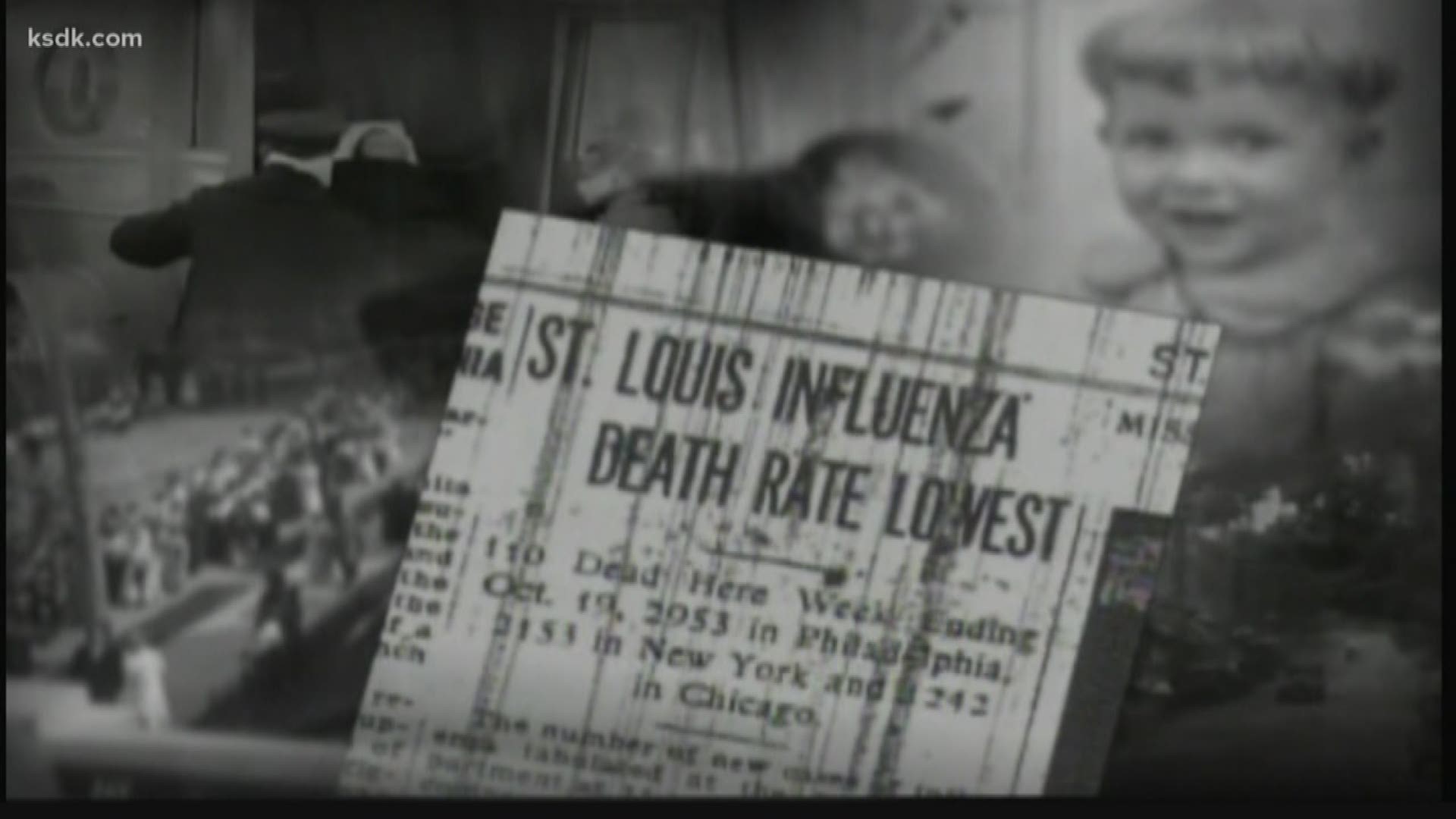ST. LOUIS — Sometimes looking to the past can help solve problems of the future.
"We have this great example of the 1918-1919 influenza. I'm hearing about this on the news, and it is touted as an example of an excellent response to epidemic contagion," said Washington University Italian professor and historian of medicine Rebecca Messbarger.
Churches, schools and shows closed throughout the city in 1918 while people were told to stay home and away from crowds.
"They made the difficult decision to essentially enforce social distancing," added Messbarger.
Messbarger said that decision would prove to be one of the best city leaders made because the death rate of Spanish flu in St. Louis was the lowest in any major city during that epidemic.
More than 100 years later, Tyler Matthews is taking precautions to protect people from the COVID-19 pandemic.
"At one point, we decided we needed to go fully online. So, this is new to us because we're all about being in person," said Matthews.
Matthews and his company, Venture Cafe, run one of the largest weekly meet-ups of entrepreneurs in the country, with 400 to 500 people showing up weekly.
"The cafe area we are in right now is usually where all the activity is, but we will take over this whole floor," added Matthews.
That area will now be empty for the foreseeable future.
Although you can't predict the future, you can learn from the past.
"As numbers rise — and they're expected to rise — I assume we'll see more measures being taken which might seem somewhat extreme," said Messbarger.
Here are some examples of social distancing from the Santa Clara Valley social distancing fact sheet.
- Public and private colleges suspending classes, going to web-based learning and canceling all large campus meetings and gatherings.
- Public and private libraries modifying their operations and restricting people from gathering by allowing people to come in only to pick up materials that have been reserved or requested online or by telephone.
- Business changing company practices, setting up flexible shift plans, having employees telecommute and canceling any large meetings or conferences.
Other social distancing measures that would be used during a pandemic include closing all public and private K-12 schools and facilities, closing all childcare centers, community centers, malls and theaters, as well as suspending services at all houses of worship.
Additionally, during a pandemic, all indoor and outdoor events that attract large crowds would be cancelled. These events include sports events, concerts, parades and festivals. Mass transit systems may also be temporarily closed or be used only for essential travel.

